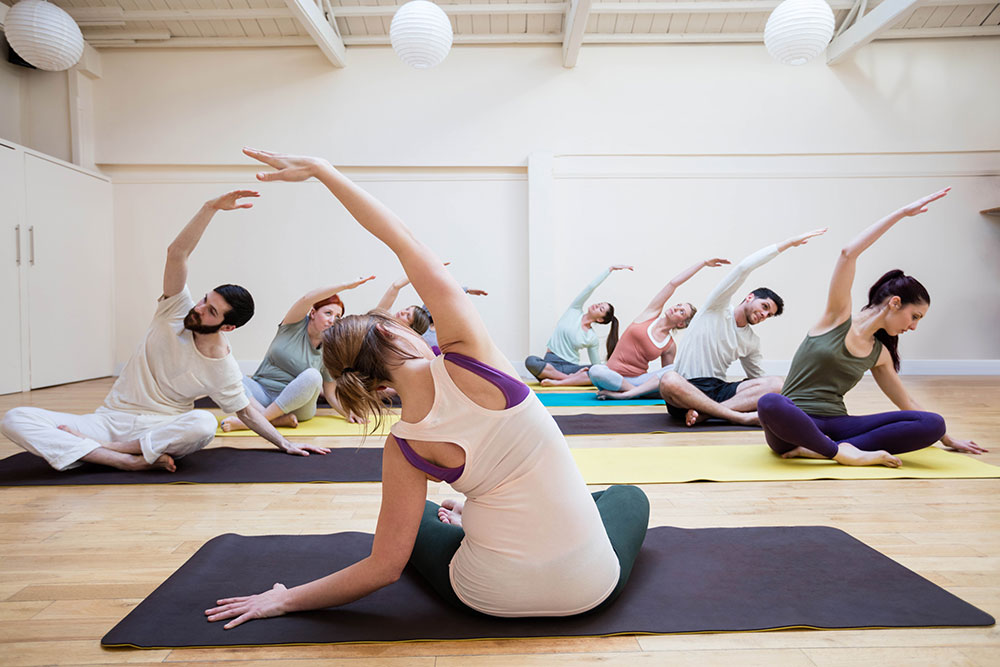
Yoga asanas to improve blood circulation
Some of the most common ailments may not always be the result of something chronic. Lack of poor blood circulation in the body can also trigger a range of health-related issues from something as mild as a headache to memory loss, hair fall, spondylitis and even heart problems.
Yoga and pranayama are the best tools to bring the otherwise rusted body into motion and promote optimum blood flow and circulation in the body. With Yogi Anoop, you can learn a variety of yoga asanas and pranayama to check faulty blood circulation and attain good health and vitality.
Here are some of the key asanas for revving up the blood flow in the body and steps to perform them. However, it should be noted that yoga and pranayama should always be performed under the guidance of a certified practitioner.
Yoga asanas for good blood circulation
Tadasana (mountain pose)
This is one of the best de-stressing asanas and extremely beneficial for the heart and for those suffering from high blood pressure. It gives a strenuous stress on the calf muscles - the second heart of the body. This simple yoga asana is good to get the blood flow gushing in the body and rectifying poor circulation.
Technique
Stand straight with your legs joined together. Interlock your fingers and stretch your arms above your head. Now, gradually raise your heels and stand on your toes while stretching yourself up and down. Make sure your heels do not touch the ground. Practice 4 to 5 sets of 20 repetitions each.
Tip
Stretch out while breathing-in and come down while exhaling. Experience the stretch in your calves.
The asana is good for high blood pressure, stress and heart ailments. Practising it increases the blood flow to the spinal region and activates the navel part. It also aids in digestion, keeping problems like constipation and gastric issues in check besides promoting blood circulation.
Utkatasana (chair pose)
As the name of the pose goes, the asana is done in a similar fashion as you sit on a chair. While practising this pose, try and maintain some distance between both knees to avoid putting too much pressure on the thighs. Apart from boosting blood circulation, this asana works wonders in tightening and toning the abdominal and thigh muscles.
"In my years of practice, I have observed that strengthening thighs and calves stave-off the accumulation of fat in the abdominal region," says Yogi Anoop.
Technique
Keep some distance between both the legs and squat as if you are going to sit on a chair. Ensure putting no pressure on the knees but only on upper thighs, hip joint and hamstring nerves. Keep your back straight. Go back up and repeat the exercise at least 20 times for 4 sets.
Tip
Those who have undergone some sort of an injury should avoid doing the asana. There should be no pain in the knees while practising this pose, pain means the posture is not being done correctly. Those with arthritis should not perform this asana.
The posture is also great for the ankles and strengthens thigh muscles, back and hip muscles.
Trikonasana (triangle pose)
The triangle pose gives a good boost to blood circulation and is also beneficial for the stomach as it provides a good stretch to the large intestine. This is an excellent asana to cleanse the bowel and get rid of the toxins.
Alternate nostril breathing can purify the nadis (whole nervous system) within three months.
Technique
Interlock your fingers and stretch into tadasana without raising heels from the ground. Keep your feet apart at shoulder length. Breathe in and while exhaling, bend to your right side and hold the pose for 2 to 4 seconds and come back. Repeat on the other side. Continue on both sides for 10 to 15 times.
Tip
Ensure that the spine is erect throughout the exercise and hands are not bent. You should feel a deep, nice stretch on your sides.
The posture is excellent for reducing fat around the waist and on the sides. The spine also gets strengthened by practising this asana.
Paschimottanasana (seated forward bend)
In yogic therapy, this asana has a great importance because it facilitates the circulation of blood in the lumbar region of the spine, upper spine and in the neck region.
As per the ayurvedic constitution, those suffering from vata and pitta must perform this asana. The posture is also great for a hyperactive and reactive mind and controls the parasympathetic nervous system and the digestive system.
Technique
Keeping your spine straight, sit with folded legs in Sukhasana. Close your eyes and breathe 10 times. Prepare your mind for the asana. Now, spread your legs in front in a straight line and inhale. While inhaling, raise your arms up and slowly bring them forward. Try touching your forehead to the knee while bending forward. Breathe normally throughout this asana. Exhale and come back to the original position.
Tip
While bending forward, do not bend your knees. Your toes should face inwards. Those with a slipped disc or other spine-related issues should avoid this asana. Beginners should not hold this posture. After practising this posture for a few days, one can hold the asana for 2-3 minutes to get maximum benefit.
Benefits
This exercise is effective for the liver, spleen and kidney besides boosting blood circulation. Those suffering from mild fever for a long period can practice this asana. Patients of arthritis and spinal joint pain can benefit a great deal from this posture.
Vajrasana (thunderbolt pose)
The posture is great for people of all three ayurvedic constitutions - vata, pitta, and kapha. It is very effective in increasing ‘saman vayu’ which controls the digestive fire and also increases blood circulation around the abdomen area.
Technique
Sit on your knees keeping the thumb of one leg on the other. Bring both your knees closer and increase the gap between the heels. Keep your hips in between the heels and the toes. Place your hands on your knees.
One can sit for long in this asana according to the capacity. This makes the digestive system strong. The asana can be done after meals.
It also aids the digestive system, the reproductive capacity and enhances blood circulation around the navel region. Hydrocele, sciatica or issues related to skeletal infections are easily resolved with the help of this posture.
Bhujangasana (cobra pose)
Practising the cobra pose is excellent as it gives a nice stretch to the back muscles and the spine. It revs up blood circulation to the spinal region. This is one of the asanas that prevents many ailments altogether. People of all ayurveda constitution types- vata, pitta, kapha - can practice this asana. The pose enhances mental stability and maintains peace of mind. It also helps in increasing the parasympathetic nerves and motor nerves system.
Technique
Lie down on the stomach with legs together, those who suffer from obesity can spread their legs a bit. The chin should touch the ground and each palm should be in line with each shoulder with palms pressing down. As you inhale, slowly raise the upper portion of the body just like a snake and hold the posture for 5 to 10 seconds. Do not hold the breath; slowly return to your original position while exhaling.
Tip
Do not hold the breath while holding the posture. Keep the elbow straight. Roll your shoulders back, take the head back slightly and look up. Stay in this pose for 5 to 10 seconds after you have practised for several days and are comfortable with the pose.
You should be able to feel some stress in your spine, upper stomach and the diaphragm. Those with any surgery in the lumbar region of the spine should practice this posture keeping legs apart.
Practising this posture is great for the blood circulation as well as for the shoulders, chest and the diaphragm, abdominal muscles, upper back muscles, lower back muscles and hip muscles. It also targets various regions of the spine such as the lumbar, thoracic and the cervical areas.
People suffering from a slipped disc can benefit a great deal out of this asana. It strengthens the lumbar region by increasing the blood circulation and also balances the digestive and the excretion process of the body. It activates the liver and kidneys and alleviates stress.
Bhujangasana helps regulate pituitary gland secretions and problems related to menstruation besides other gynaecological issues. The asanas can be done 10 times to begin with and gradually practised for more counts.
Dhanurasana (bow pose)
The pose derives its name from the term 'Dhanur' which means a bow. While engaging in this asana, the body is stretched and bent backwards in the form of a bow. It helps in strengthening the abdominal and the lumbar region of the body and enhances the blood flow in the body.
It is one of the best postures for people with kapha constitution.
Technique
Lie down on your stomach and relax your body. Take 2 or 3 deep breaths and fold your legs. Take both your hands to the back and clutch your ankles. Raise the upper and the lower part of the body while exhaling. Hold this position for 5 seconds. Inhale and come back to the normal position.
While doing this posture, feel the strain in the middle of the stomach and in the lower back. It is great for spinal health and also enhances sexual ability. Repeat 3 to 4 times and increase reps gradually after some amount of practice.
Tip
Those with peptic ulcer and intestinal problems should not perform this exercise.
Naukasana (boat pose)
As the name of the asana suggests, while practising this pose the body mimics the shape of a boat. This pose is especially effective in making the blood circulation faster throughout the body.
Technique
Lie flat on your stomach and take deep breaths. Bring your arms in front while keeping the neck, face and head relaxed. Inhale and raise your arms and legs. Raise your head and chest simultaneously. Feel the weight of your body on your stomach while your body must look like a boat.
Keep breathing normally and hold the pose for a few seconds. Exhale and come back in the normal posture. Repeat at least 5 times.
Tip
Those suffering from issues in the cervical region of the spine or blood pressure problems must avoid doing this asana or practice it under guidance. Perform it on an empty stomach.
Naukasana is beneficial in countering issues in the lumbar and the cervical region of the spine, especially in cervical sodalities. It helps in blood circulation and activates the navel region which helps in removing gastric problems.
Copyright - by Yogi Anoop Academy
